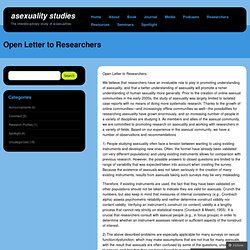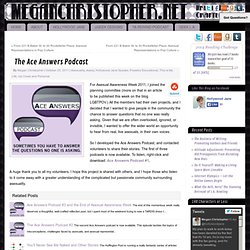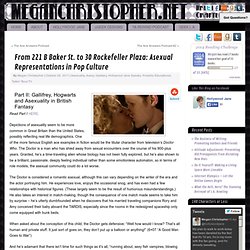

The Queer Ace. Open Letter to Researchers « Asexuality Studies. Open Letter to Researchers: We believe that researchers have an invaluable role to play in promoting understanding of asexuality, and that a better understanding of asexuality will promote a richer understanding of human sexuality more generally.

Prior to the creation of online asexual communities in the early 2000s, the study of asexuality was largely limited to isolated case reports with no means of doing more systematic research. Thanks to the growth of online communities—and increasingly offline communities as well—the possibilities for researching asexuality have grown enormously, and an increasing number of people in a variety of disciplines are studying it. As members and allies of the asexual community, we are committed to promoting research on asexuality and working with researchers in a variety of fields. Based on our experience in the asexual community, we have a number of observations and recommendations Therefore, the possibility for feedback should be given.
Brotto, L. Sex Positive St. Louis » Blog Archive » (A)sexuality: The Making of a Movement. AAW 11 Logo Oct 23-29 is Asexual Awareness Week!

That’s right now! To celebrate, SEX+STL refrained from all sexual activity this week. Results of the Asexual Community Census 2011. Megan Christopher: Asexuals Activate! : LGBT. Ace Answers Podcast #3 and the End of Asexual Awareness Week. The Ace Answers Podcast #2. The second podcast is now available, so right-click and save as: Ace Answers Podcast #2.

For reasons known only to Technus, lord of machines, this podcast can also be listened to streaming just by clicking it, even though I did exactly the same thing that I did when I uploaded the first one. C’est la vie! This episode tackles the topics of misconceptions, challenges faced by asexuals, and asexual representations in the media. I’m working on finding the best way to upload and share these podcasts, so hopefully they can be streamed at some point. The Ace Answers Podcast. For Asexual Awareness Week 2011, I joined the planning committee (more on that in an article to be published this week on the blog LGBTPOV.)

All the members had their own projects, and I decided that I wanted to give people in the community the chance to answer questions that no one was really asking. Given that we are often overlooked, ignored, or invisible, I wanted to offer the wider world an opportunity to hear from real, live asexuals, in their own voices. So I developed the Ace Answers Podcast, and contacted volunteers to share their stories. The first of three podcasts is now available. To listen, right-click and download: Ace Answers Podcast #1. From 221 B Baker St. to 30 Rockefeller Plaza: Asexual Representations in Pop Culture.
Read Part II HERE.

Equally as important as celebrating asexual heroes is having real-life reflections on the screen or page. Time Lords and wizards are all well and good, but they can too easily be dismissed as ‘unrealistic,’ because they don’t actually exist in our world where everyone has sex all of the time. That doesn’t help ordinary human beings who are looking for validation, and reassurance that feeling otherwise is still okay. There aren’t a lot of modern role models. From 221 B Baker St. to 30 Rockefeller Plaza: Asexual Representations in Pop Culture. Read Part I HERE.

Depictions of asexuality seem to be more common in Great Britain than the United States, possibly reflecting real life demographics. One of the more famous English ace examples in fiction would be the titular character from television’s Doctor Who. The Doctor is a man who has shied away from sexual encounters over the course of his 900-plus years. Granted, he’s a time-traveling alien whose biology has not been fully explored, but he’s also shown to be a brilliant, passionate, deeply feeling individual rather than some emotionless automaton, so in terms of role models, the asexual community could do a lot worse. The Doctor is considered a romantic asexual, although this can vary depending on the writer of the era and the actor portraying him. From 221 B Baker St. to 30 Rockefeller Plaza: Asexual Representations in Pop Culture. Back in the days when Lucy was still coming up with hare-brained schemes to get into Ricky’s shows, it was considered scandalous to show a married couple sharing the same bed on TV.

In modern culture, with thinly-disguised soft-core porn making up a large percentage of HBO and Showtime programming, eyebrows are far more likely to go up at depictions of adults who demonstrate little to no interest in sex, and unfortunately for those who find sex as appealing as licking drywall, popular culture has sent a clear message: “Sex is normal – you are not.”
The media is where humanity looks to see itself reflected, where people are reassured that they are not alone in their beliefs and can also learn about what is unfamiliar to them. While there are some fictional examples for whom intercourse is not the answer, they’re hard to spot against the backdrop of our sex-obsessed society, which makes identifying and claiming them even more important. AAW2011-financialreport.pdf. Asexual Awareness Week 2011 - October 23-29.